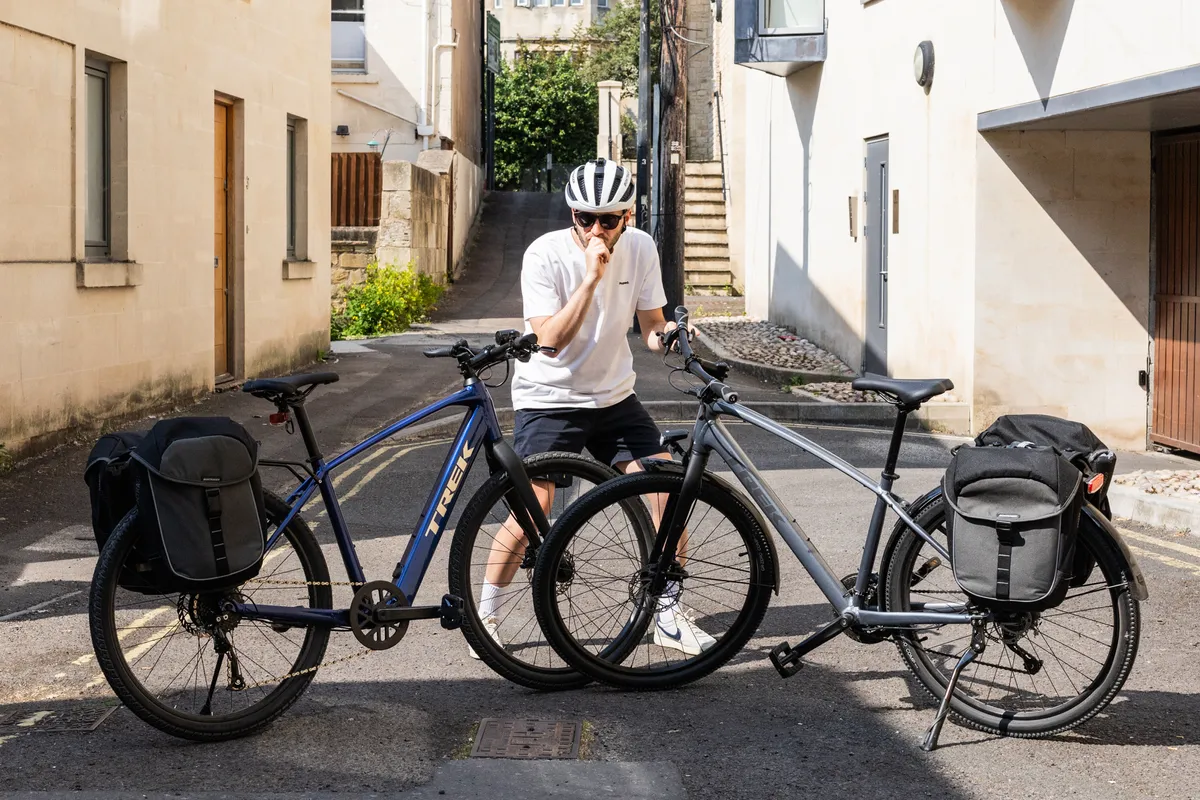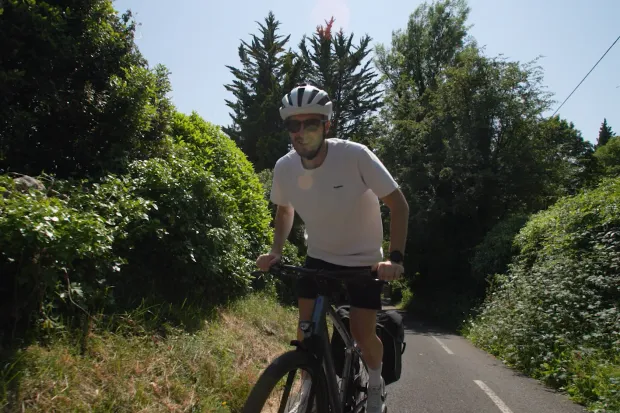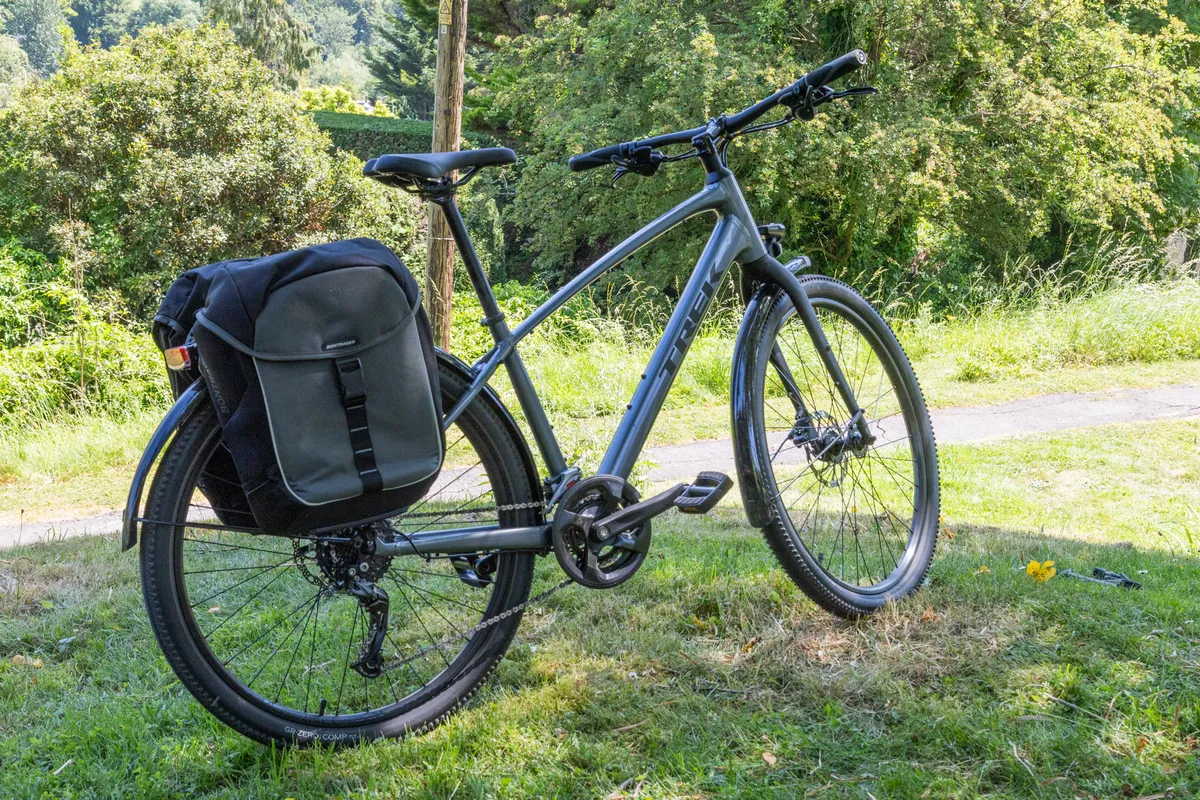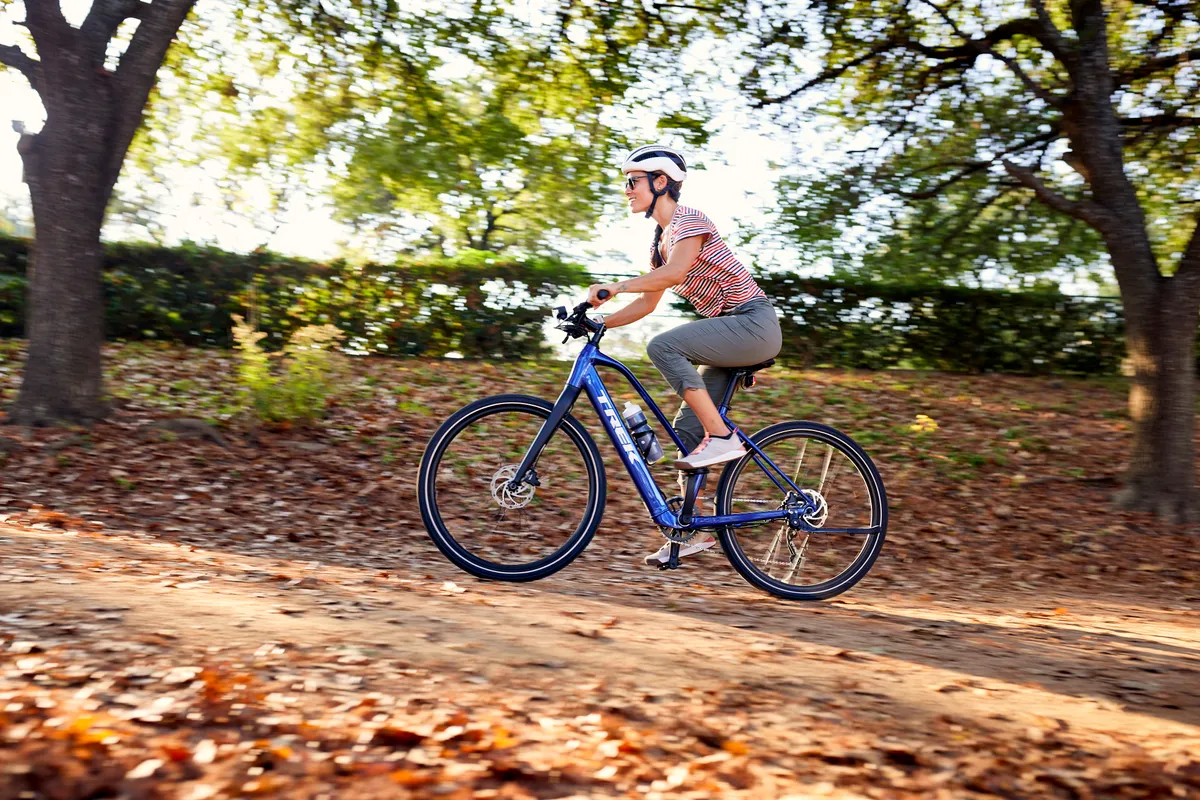Cycling to work is a brilliant way to save money, stay active and avoid sometimes unreliable public transport. In rush-hour traffic, a bike is also often the fastest way to get across a town or city.
Cycling to work is also satisfying – sure, there can be bad bits, but an active commute has been shown to improve physical and mental health. It’s also better for the planet.
But, if you’re new to cycling or want to buy something specifically for cycling to work, how do you know which bike is best for commuting?
For many, this choice boils down to deciding between a non-assisted bike or something that offers a bit more assistance in the form of an electric bike.
In this article, I compare an ebike and an unassisted bike from our sponsors Trek on two very different commutes, outlining where each excels.
There’s no avoiding the fact that a new bike is a significant outlay for anyone, so I also break down the potential yearly savings from swapping your car or public transport for a bike – both electric and unassisted.
Electric bike vs unassisted bike – a practical test

I’ve devised a practical test to compare how an electric bike and a non-assisted bike perform on two routes.
Both routes go from near Limpley Stoke – a small village on the outskirts of the city of Bath in the south west of England – over to the Trek store on the other side of the city.
The direct route is around 8 kilometres long, but includes a hideously steep hill.
The scenic route is pancake-flat, mostly following the route of a canal, but the distance is increased to 12km.
I rode both routes on each bike to compare how each performed. Watch the video above for more detail, but here are some of my findings in brief:
Motor assistance can be invaluable

No surprises here, but the assistance offered by an electric bike motor made the lumpy commute far more enjoyable.
The wide-range gearing of an unassisted bike such as the Trek Dual Sport 2 Equipped Gen 5 hybrid means steep climbs can be dispatched with relative ease. However, if you live somewhere hilly, want to arrive in comfort and can stretch your budget to buy one, an electric bike is a no-brainer.
Wider tyres = comfort

Both bikes feature chunky 50mm-wide tyres.
A narrower tyre will be lighter and can be more efficient on smooth terrain, but that’s hardly a concern on a bike designed to get you to work – comfort and reliability is the name of the game here.
The wider tyres were particularly welcome on the rough canal path. When run at an appropriate pressure, they offered additional comfort on rougher patches.
Mudguards are key
If you live somewhere with a climate like the UK’s, any commuting bike worth its salt will have mudguards. Arriving at work with a wet backside is simply no fun at all.
While I was lucky enough to be testing on dry days, had it been wet, I would have been thankful for the mudguards on the Dual Sport 2 Equipped Gen 5 hybrid.
The Dual Sport+ 2 also has provisions to fit mudguards. These would be a must-buy if I was considering this bike.
Cycling vs driving or public transport – how much could you save?

Now that you have a better idea of which bike might be best for your commute, let’s examine how much you could save versus driving or taking public transport.
We’ll use my commute as an example.
I live in the lovely city of Bath in the south-west of England. My workplace is in the centre of Bristol and I have a number of options for getting there.
The cycle to Bristol can be done on the main road, taking me roughly 40 minutes. This is efficient, but not particularly pleasant in busy traffic.
However, I’m very lucky in that there is also a cycle-path route, covering the majority of the journey. It’s flat, but a bit longer. Going this way takes me about an hour.

How does that compare to public transport?
I sometimes take the bus, mostly when the rain is really lashing down. If it arrives on time, I go from door to door in around one hour and 20 minutes.
The return journey is £4, which is pretty reasonable. For truly grim days, it’s a welcome option.
If I committed to full-time bus life, and we assume I work 225 days in the office per year, that would work out at around £900 on bus fares.
Then there’s the train. That provides the fastest journey time at just 13 minutes, but there’s a fair amount of walking to do at either end, and I’ve only got little legs, so that takes it up to 44 minutes.
The real stinger is that the train costs £10.60 per day for a return.
Once again, assuming I work 225 days a year in the office, that would tally up to £2,385 a year.
But that pales into insignificance compared to the cost of driving.
Getting into Bristol in the morning takes around an hour and 10 minutes. The diesel costs roughly £8 per day and parking is easily £10. And that’s before you consider Bristol’s clean air zone, which for my slightly outdated Skoda, means I pay a £9 charge per day.
For 225 office days a year, that would take us up to £6,075. Let’s just say I’ve never driven in.
Putting that all together:
- Car – £6,075
- Train – £2,385
- Bus – £900
- Trek Dual Sport 2 Equipped Gen 5 – £925
- Trek Dual Sport+ 2 – £2,150
While there’s always going to be a significant initial outlay when buying a new bike, it’s easy to see how commuting by bike – electric or otherwise – could save money in the long run.
And that’s not to mention the other benefits of commuting by bike – you’ll likely feel happier and healthier, plus it’s cheaper. What’s not to love?
So, which bike is right for you?

What type of bike you opt for will depend on the length of your commute, the type of terrain you ride on and your budget.
As my example commute illustrates, if you live somewhere hillier and you can afford an electric bike, it could make your commute easier and less stressful.
If you have a flatter commute or want more of a workout, you will likely get on fine with an unassisted bike. Modern wide-range gearing will see you up all but the steepest hills and wide tyres make for a comfortable ride.
Outside of riding conditions, it’s also worth considering other things such as your facilities at work.
I am lucky enough to work somewhere with secure bike storage and a shower.
I personally use my commute as a workout, but I’m not sure I’d be keen to do so and arrive in a sweaty mess without these. An electric bike could be a better choice in that case.
Either way, switching to a bike is very likely to save you money in the long run. While initial costs can be high, finance or the Cycle to Work scheme can help spread the load.

